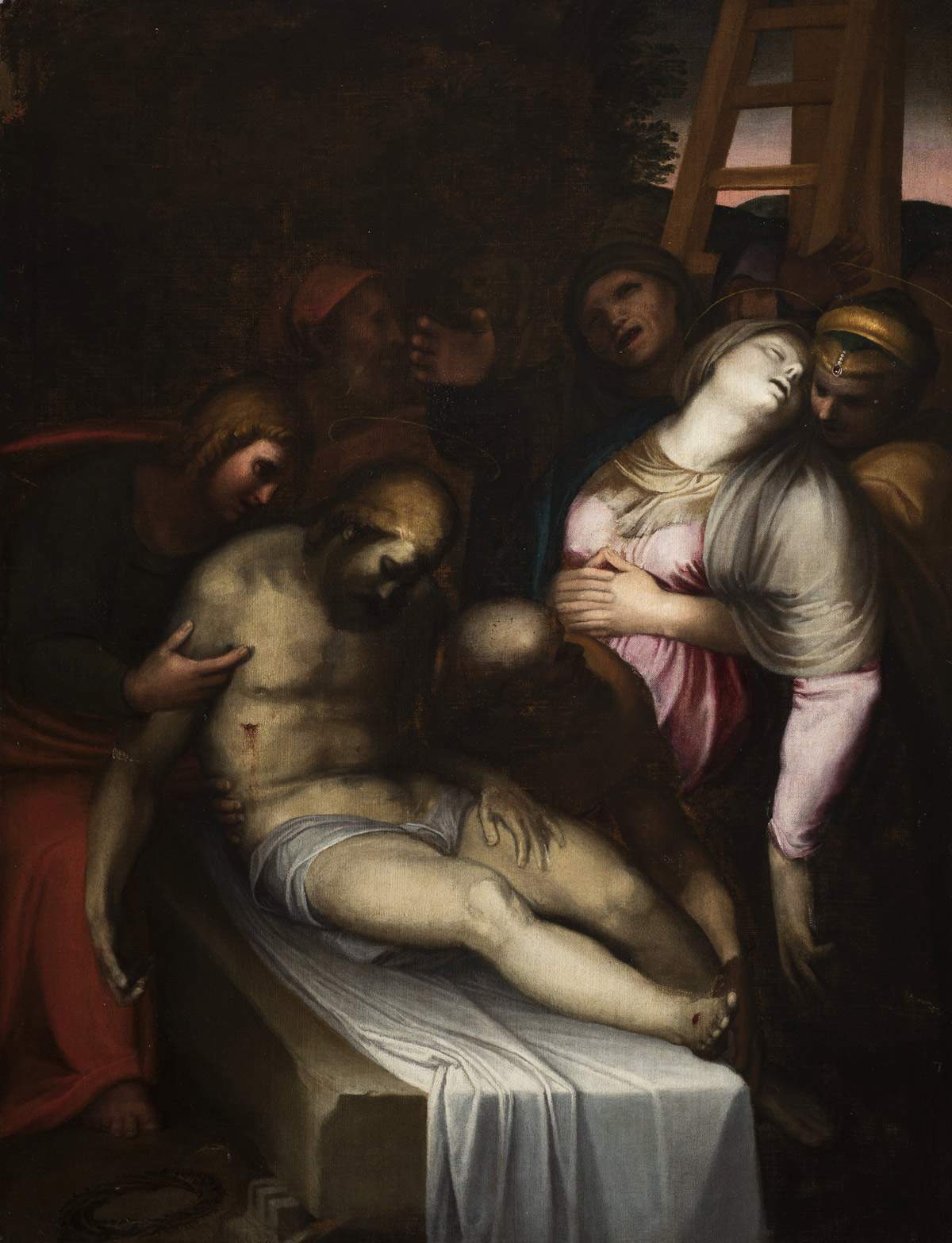Rome, an exhibition at Palazzo Barberini on the dialogue between Michelangelo and his followers, with never-before-seen comparisons
The National Galleries of Ancient Art are hosting from October 11, 2019 to January 6, 2020, at the Palazzo Barberini venue the exhibition Michelangelo in Color. Marcello Venusti, Lelio Orsi, Marco Pino, Jacopino del Conte, curated by Francesca Parrilla and Massimo Pirondini, with scientific coordination by Yuri Primarosa.
The exhibition presents a small but valuable nucleus of works that attest to the fruitful dialogue between Michelangelo (Caprese, 1475 - Rome, 1564) and his followers. By playing on the double representation of the main sacred themes treated by Buonarroti and punctually taken up by different painters, it will be possible to grasp the close connection existing between the works on display, compared for the first time with each other, and the drawings of the great Tuscan artist, exhibited in reproduction.
The first focus will revolve around Lelio Orsi’sAnnunciation, from the Gonzaga Museum in Novellara (Novellara, 1508/1511 - 1587), formerly attributed to Marcello Venusti (Mazzo di Valtellina, 1510 - Rome, 1579). The panel, characterized by a compelling collecting history (it had several owners from Cardinal Alessandro D’Este to the famous collector Sebastiano Resta and the Duke of Marlborough John Churchill) will be juxtaposed with Venusti’sAnnunciation from the Corsini Gallery, considered among the most important examples of the lost altarpiece that the Lombard painter had painted, from a drawing by Michelangelo, for the Cesi chapel in Santa Maria della Pace.
Also from a drawing by Michelangelo, now housed in the Uffizi, are the two panels of theOration in the Garden of Venusti, made in different periods. Translating into painting the drawings Buonarroti granted him or obtained through Tommaso de’ Cavalieri, an intimate friend of Michelangelo’s, Venusti soon gained wide acclaim, evidenced by the presence of his paintings in the main aristocratic collections of the peninsula and in the aristocratic chapels of numerous Roman churches(Santa Maria Sopra Minerva and Santa Maria della Pace, to name a few).
Whipped up by Counter-Reformation currents, the theme of the Crucifixion had an unparalleled fortune. Venusti’s composition is the result of the union of three important drawings by Michelangelo: the living Christ on the Cross, now in the British Museum in London, made for the marquise Vittoria Colonna, and the two sheets pervaded with mystical inspiration depicting the Madonna and St. John mourning at the foot of the cross, preserved in the Louvre Museum in Paris.
Starting from Michelangelo’s models, the artist painted an unknown number of variants, more or less rich in detail. The unpublished example presented in the exhibition, from a private Roman collection, is characterized by the addition of Magdalene at the foot of the cross, probably the prototype of the well-known series of compositions with the pious woman.
Also on display in the exhibition will be a valuable Michelangelo-esque Living Christ on the Cross, also never shown to the public, from a private collection in London, and here attributed to Marco Pino (Siena, c. 1525 - Naples, c. 1587).
Also arriving from the Corsini Gallery will be the Madonna del Silenzio, so far attributed by critics to both the circle of Marcello Venusti and Prospero Scavezzi known as Bresciano (Brescia, c. 1555 - Rome, 1599) and executed on the basis of an invention formulated by Michelangelo for one of his most devoted admirers, the aforementioned Vittoria Colonna, marchioness of Pescara. After careful analysis of the painting, the exhibition curators leaned toward the first hypothesis, that is, the area or workshop of Marcello Venusti. Completing the exhibition will be the theme of the Deposition illustrated by a little-known canvas by Marcello Venusti kept in the storerooms of theAccademia Nazionale di San Luca, alongside the great Deposition by Jacopino del Conte (Florence, c. 1515 - Rome, 1598) in the Barberini collection: two masterpieces of the Roman 16th century restored for the occasion, also derived from the inventions of the great Tuscan master.
Visitors will have the opportunity to walk through the exhibition rooms with an exceptional guide: in fact, four free guided tours with Francesca Parrilla, co-curator of the exhibition, are scheduled for Saturday, October 19, November 16, November 30, December 14, at 5 p.m. Also planned is a series of educational workshops for children ages 5 to 10 that will lead participants to discover the exhibition and the masterpieces of the permanent collection, which will take place from Sunday, Oct. 13 to Sunday, Dec. 29, at 11:30 a.m. (excluding the first Sundays of the month, when the museum will be free). Activities by reservation at: didattica@barberinicorsini.org. Meet in front of the ticket office. All activities are free of charge. For two accompanying persons there is a reduction on the ticket price to 6 euros.
The exhibition will be accompanied by a catalog with essays by the curators and critical worksheets of the works on display. For all information you can visit www.barberinicorsini.org.
Pictured: Marcello Venusti, Deposition (1550-1570; oil on canvas, 103 x 78 cm; Rome, Accademia di San Luca)
 |
| Rome, an exhibition at Palazzo Barberini on the dialogue between Michelangelo and his followers, with never-before-seen comparisons |
Warning: the translation into English of the original Italian article was created using automatic tools. We undertake to review all articles, but we do not guarantee the total absence of inaccuracies in the translation due to the program. You can find the original by clicking on the ITA button. If you find any mistake,please contact us.



























